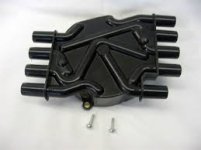Snakeriversailor77
Contributing Member
Been trying to diagnose what is stopping this Bayliner from turning more rpm. Initially the boat would run over 35 mph at WOT. The starboard engine sucked up some water (bad manifolds and lack of flapper) and had to have the top end rebuilt. After getting it back together, the engines start and run great, no missing or sputtering. The props have not changed, no extra weight in the bilge. The boat idles and will rev without load but will not turn over 2200 rpm at WOT under load while in gear. The throttle plates are wide open yet no more rpm. Neither engine is revving above that 2200 mark. The port engine was not worked on at all and isn't turning either. The Rinda diagnostic tool indicates 100% power available. Only codes that come up are "pitot level ckt", "fuel level ckt low" and "steering ckt low". It does say "Guardian active unspecified" on both engines but does not clear when codes cleared. the only thing other than that shows up as a 32F temp on both the port and starboard head temp. Obviously wrong with the raw water temps in the 70.s F. The trim is going up and down on the outdrives and the tabs are working as well. This I don't think would stop the engines from cranking up to higher rpms anyway would they? The boat will only get up to about 8 or 9 knots at the maximum rpms of 2200. Good compression, all cylinders firing. We swapped the ecm's side to side on the motors, no change. Props have not been altered from when it ran 35 plus rpm. Help!


